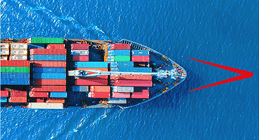Exporting may still be a pipe dream for your business, but having the foundations in place for a future foray into international trade is essential. That’s the advice of Charles Platts, CFO at aerospace company Orbex and Chairman of ICAEW’s Global Trade Advisory Group, who says there are several considerations that will help to ensure your business is geared appropriately to take advantage of export opportunities.
Orbex is a business-to-business orbital launch services company, serving the small satellite industry. As a high-tech scale up, export represents a huge proportion of Orbex’s opportunities – more than 80% of future revenues. “For many UK companies, exporting may be badged as something that’d be quite nice to do, whereas for our businesses there isn’t sufficient market within the UK so we had to set the business up from scratch, knowing that we would be exporting. This is the case with many deep tech companies,” Platts says.
Starting with the basics: multicurrency capabilities
Ensuring that whichever accounting system you use offers multicurrency functionality from the outset will avoid problems down the line as and when you start to export. “Most will have that capability and it’s simply a case of how you set it up,” Platts says.
“That’s part of a broader consideration about how you handle foreign currency. Many people automatically revert to selling in US dollars when selling internationally. You don’t have to do that, but if you do, don’t consider it as an easy decision to make. Understand that your top line will move up and down. Think about how you will handle converting that back to pounds,” Platts says.
Developing a foreign currency hedging strategy as early as possible is an advantage. “The best thing is to start out not even exposing yourself to it and trying to sell everything in pounds. Customers don’t always like that so it’s about balancing that with the need to make it easy for potential customers.”
Export controls
When it comes to the additional knowledge you need regarding export, it’s not all about duties. In any industry – particularly the hi-tech sector – you need to be thinking right from the very start about export controls. In addition to border controls and customs declarations, you should also consider the possible legislation around exports specific to your products, which can be fraught with complexity.
“For example, the concept of dual use is where something that ordinarily has an industrial use could also have military application. A microchip for a microwave or a fridge that has potential military application opens up a whole new world of legislative complexity. And it’s constantly evolving,” Platts says. The US International Traffic in Arms (ITAR) rules are particularly difficult to navigate.
“From day one at Orbex, design decisions about how to construct the rocket that we’re making have been taken to make sure it doesn’t fall within the US ITAR rules. It means we’re pretty much the only people in the world that make rockets that don’t get caught up in ITAR, which is a massive selling point.”
When you’re starting from scratch, think about your systems, your internal processes and the way you’re developing your products or services to make sure that you don’t accidentally end up in scope of some of these very difficult areas to deal with, Platts says. “You might be happy doing it, but make sure that you’re doing it consciously because it’s very easy to fall full foul of this by accident, especially when you’re a new business and you’re growing because you just don’t know that some of this stuff exists out there.”
Boots on the ground
When it comes to international trade and export markets, an online presence will only get you so far. Accessing export markets is all about boots on the ground, Platts says. You don’t necessarily need a physical office overseas, but you do need to put the air miles in and make the effort to familiarise yourself with the local environment, reach out to prospective customers and establish connections in your target markets.
“An online presence is great, but technical buyers aren’t going to find you like that. You have to know where your target customers are and you need to be able to approach them directly. In our industry, if you try to do it remotely without going to trade shows and industry events, you’re wasting your time. You don’t necessarily need to have a stand at events, but you need a presence.”
Tap into help from DBT
Trade missions organised by the Department for Business and Trade (DBT) provide a fantastic platform to showcase your brand to potential buyers, marketplaces and distributors in the market. “DBT runs a lot of those so find out which ones they’re running that might be relevant to your business and try to get involved. They can be really useful for getting introductions, especially when you’re starting out,” Platts says.
Make conscious decisions about export infrastructure
When you go down the export routes, think carefully and consciously about setting up your infrastructure overseas. Bear in mind that it’s easy for that to happen almost accidentally. “Somebody will employ an agent somewhere and all of a sudden they’ve got a permanent establishment in some random country with a need to do tax returns.”
Factor in the cost of overseas trade
If you know that you’re going to have to invest in a physical overseas presence, make sure that’s properly factored into your financial plans. “It’s expensive and it’s a lot of money up front. And depending on your product, your sales cycle could be very long. It could be years before you get something in, especially if you’re trying to sell into big corporates,” Platts explains.
Charles Platts is CFO of aerospace company Orbex and Chair of ICAEW’s Global Trade Community.
Get involved
For International Trade Week there are a host of free resources you can access from ICAEW, and beyond, find out more from the Department for Business and Trade.



